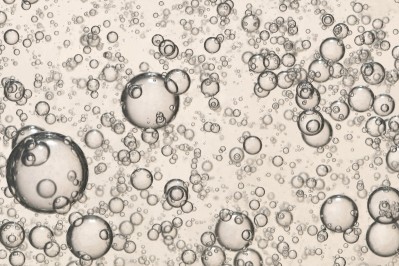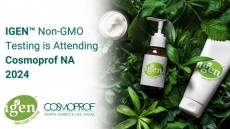Science meets beauty: An in-depth look at Safflower Oleosomes in skin care formulations

As reported by market research firm Statista, "in 2023, facial cleansers were the most profitable segment of the US skin care market," and "multi-outlets sold around 247 million units of facial cleanser" last year to generate about $1.85bn in revenue. To remain competitive in this space, personal care brands are constantly innovating their research and development of active ingredients to appeal to an increasingly well-educated and diverse skin care consumer demographic.
To learn more about Safflower Oleosomes in the skin care space, we spoke to Eweline Aiossa, Founder of skin care brand Topical Skin, and Dr. Jagedo, a dermatologist who recently published a peer-reviewed paper on the ingredient's efficacy, for an in-depth exploration of Oleosome Technology’s role in modern skin care formulations. In our interview, they offered essential insights for cosmetics and personal care product manufacturers and suppliers regarding this new approach to enhancing the delivery and effectiveness of active ingredients in skin care products.
CDU: What inspired you to create Topical Skin, and how did the idea for its formulation first come about?
Ewelina Aiossa (EA): Utilizing my extensive 15 years of experience collaborating with and working within the professional beauty industry, including brands, skin care experts, and scientists, my goal was to develop a product line that bridges the divide between science-backed cosmetics and clean beauty. This line would harness the potency of naturally-derived and sustainably sourced ingredients that possess multifunctional properties and incorporate them into a cosmeceutical.
Additionally, I sought to bring innovation to the forefront and seamlessly incorporate elements of biohacking and derm-hacking, making them accessible to a wider audience. My aim was to reshape the narrative surrounding skin health, positioning Topical Skin as a brand that prioritizes science and innovation while maintaining a clean profile.
CDU: How did you decide on the specific ingredients used in Topical Skin? Were there any particular criteria or benchmarks that these ingredients had to meet?
EA: Whenever possible, I advocated against using certain ingredient blends, instead, I sought out "cleaner" and sensitive-skin friendly alternatives. As an example, I decided against using a peptide in an alcohol base and instead opted for the same peptide in a glycerine blend.
Another meaningful example was the inclusion of the bioavailable form of Hyaluronic Acid, Sodium Hyaluronate, in the Age-Defying Peptide Serum. Sodium Hyaluronate is also recognized as a postbiotic. I gained a deeper understanding of the industry and invaluable knowledge while working at L’Oreal SkinCeuticals, Pierre Fabre Dermocosmetics, and Topix Pharmaceuticals, Inc.
I also emphasized the significance of utilizing natural and sustainably sourced ingredients. I strongly believe in the power of botanicals and have a deep appreciation for natural medicine. With that in mind, I intentionally incorporated ingredients inspired by Traditional Chinese Medicine, as well as a variety of humectants and emollients, to enhance the hydrating benefits of our Topical Skin formulas.
My primary objective was to ensure that each product contains ingredients that do not disrupt the skin's delicate ecosystem and effectively support the skin barrier. Moreover, I gave priority to clinically validated and multifunctional ingredients over marketing hype and trend-driven ones.
CDU: Can you walk us through the initial stages of your R&D process?
EA: Dermatologists always emphasize the significance of maintaining a well-hydrated skin barrier as the foundation for healthy skin. In order to delve deeper into this concept, I conducted thorough research to explore both traditional and innovative methods of supporting the skin barrier and enhancing its moisture levels.
Studies have shown that ceramides, cholesterol, and essential fatty acids are effective in fortifying the skin barrier and promoting hydration. As I delved further into my research, I stumbled upon another ingredient that plays a role in maintaining skin barrier health: Safflower Oleosomes.
This natural, multitasking ingredient also acts as a delivery system. Intrigued by its potential, I decided to consult with a seasoned cosmetic chemist who possesses 40 years of experience in formulating medical-grade skin care, as well as a board-certified dermatologist and brand’s medical liaison.
Dermatologist Dr. Jared Jagdeo conducted additional research to shed light on the benefits of Safflower Oleosomes, confirming their safety, bioavailability, and their ability to enhance skin hydration. Alongside his team, he authored a research paper titled "The potential cutaneous benefits of Carthamus tinctorius oleosomes," which was subsequently published in a peer-reviewed journal called the Archives of Dermatological Research.
Meanwhile, the chemist verified my discoveries, affirming that oleosomes contribute to the improvement and effectiveness of formulations. They also contain a significant amount of tocopherol, which is known for its soothing properties on the skin.
Inspired and motivated by the profound wisdom of nature and guided by the transformative power of modern science, I proceeded to create formulas that harness the potential benefits of oleosomes.
CDU: For those unfamiliar with it, could you explain what Oleosome Technology is and how it functions within Topical Skin’s formulation?
EA: When I first discovered the benefits of safflower oleosomes, I immediately knew they would be a perfect addition to our portfolio of clean and moisture-enhancing cosmeceuticals. After conducting further research on oleosomes, I was amazed by their incredible potential as a delivery system, also known as "carrier technology."
Not only are oleosomes derived from nature, environmentally friendly, and sustainable, but they also provide nourishment to the skin as emollients, gradually releasing Vitamin E, linolenic acid, and other beneficial compounds that hydrate and nourish the skin. With the growing emphasis on 'skinimalism' and multi-functionality in the skin care market, choosing oleosomes was a no-brainer. I see oleosomes as a biohacking tool, allowing us to optimize our skin care routine and enhance the overall health and appearance of our skin.
I view oleosomes as a powerful ingredient in cosmetics that offers significant advantages for the skin and, most importantly, improves the natural skin barrier for healthy aging. Customers are increasingly adopting a holistic approach to their skin health and seeking natural remedies that are both safe and efficient. In my opinion, oleosomes fulfill all these requirements.
Jared Jagdeo, MD (JJ): As explained in the abstract, Oleosomes have shown encouraging results in targeted drug delivery in in vitro and in vivo animal models; however, human clinical research is required to determine their efficacy and safety in dermatology. Oleosomes are comprise a novel biotechnology that has the potential to transform sustainable and natural treatments in dermatology by utilizing their unique structure. Safflower oleosomes are stable lipid molecules that can deliver small and large molecules with high efficacy.
Oleosomes are comprise a novel biotechnology that has the potential to transform sustainable and natural treatments in dermatology by utilizing their unique structure. Safflower oleosomes are stable lipid molecules that can deliver small and large molecules with high efficacy.
CDU: What were some of the main challenges you faced during the formulation process of Topical Skin, and how did you overcome them?
EA: To assist me in this endeavor, I joined forces with a research and development laboratory that employs skilled and experienced technicians. Together, we developed prototypes that successfully passed rigorous stability tests.
By submitting a very detailed product brief, leveraging effective formulation practices, maintaining clear lines of communication, and promptly incorporating feedback, we were able to minimize the number of iterations required. Subsequently, I presented the prototypes to a select focus group consisting of skin care professionals and enthusiasts.
Based on their valuable input, we made some minor adjustments to the formulas, ensuring that they met the target cosmetic elegance standards, such as non-stickiness, desirable textures, and viscosity, as well as a pleasant after-feel and quick dry-down).
CDU: How many iterations did the formulation go through before you were satisfied with the final product? Could you share any insights or learnings from this iterative process?
EA: Throughout the process from the initial brief to the final approved formula, there was only a single redirection and three submissions that successfully met all the required criteria for quality, stability, and performance. These submissions also managed to satisfy consumer preferences in terms of product texture and overall sensation.
CDU: What measures did you take to ensure the safety and efficacy of Topical Skin?
EA: Our formulas are firmly grounded in scientific research, with ingredients chosen based on rigorous scientific studies rather than marketing hype. Topical Skin products do not contain common skin-sensitizing ingredients, parabens, or sulfates. Instead, they are infused with powerful antioxidants, phytonutrients, and minerals that help combat inflammaging.
To ensure the effectiveness of our products, we have conducted consumer perception studies on product efficacy and opted for activities that have been clinically validated and proven to be safe.
Our team of knowledgeable formulators closely monitor scientific advancements and stay up-to-date with the latest research and breakthroughs in the fields of aesthetic medicine, dermatology, and cosmetics.
CDU: Did you collaborate with any dermatologists, chemists, or other experts during the R&D process, and if so, how did their expertise contribute to the final product?
EA: Yes, I collaborated with an experienced cosmetic chemist who specializes in developing professional-grade formulas to brainstorm the most effective approach for creating the serum. We discussed the product's claims and functions. Additionally, I consulted with another cosmetic scientist who holds a master's degree in chemical engineering to assist with the formula compounding process.
I had multiple discussions with Dr. Jagdeo where I shared my initial findings on oleosomes, and he took it upon himself to conduct further in-depth research on this topic. Additionally, Dr. Ekta Yadav served as the medical science liaison for our brand.
Furthermore, I established a small focus group comprising of medical aestheticians who provided valuable feedback on the various formula concepts and prototypes. Their input was instrumental in selecting the final winning formula.
CDU: Are there any plans for future research or additional studies to further explore the potential of Oleosome Technology in skin care?
JJ: Clinical trials need to be done to demonstrate the benefits of oleosomes in clinical application of skin care in patients.












![[Getty Images]](/var/wrbm_gb_food_pharma/storage/images/_aliases/wrbm_tiny/publications/cosmetics/cosmeticsdesign-asia.com/article/2024/09/11/beauty-broadcast-australian-olive-oil-producers-urged-to-upcycle-pomace-for-cosmetics-as-health-wellness-interests-surge/17730919-1-eng-GB/Beauty-Broadcast-Australian-olive-oil-producers-urged-to-upcycle-pomace-for-cosmetics-as-health-wellness-interests-surge.jpg)



